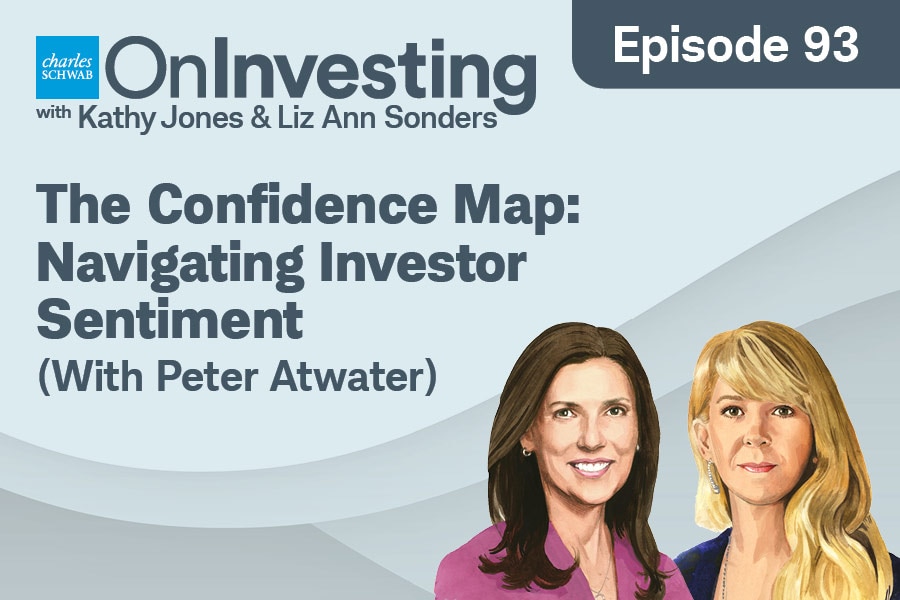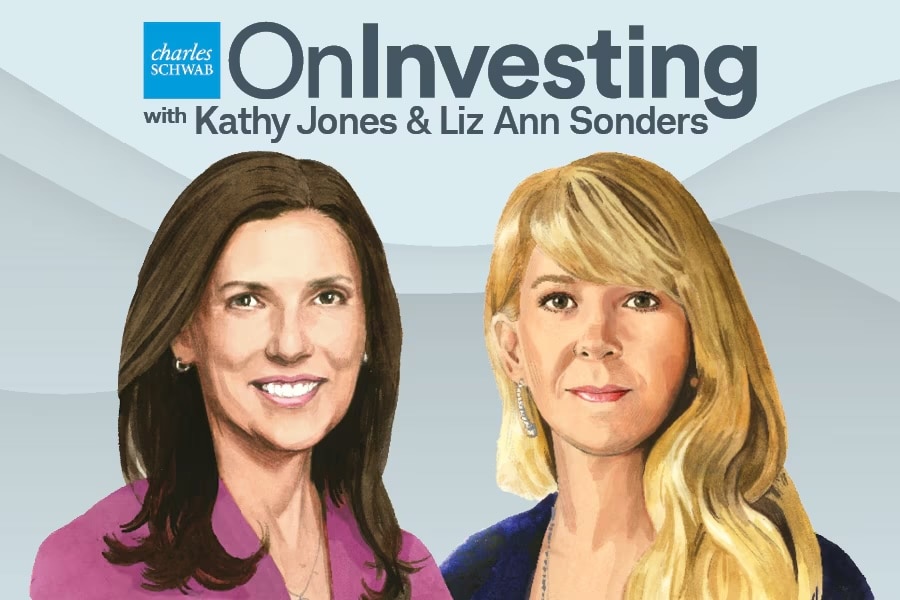On Investing
From market moves to the latest economic news, On Investing looks below the surface of the headline data to bring you fresh insights on what's happening and why—and what the implications are for your portfolio.
Closing Thoughts on 2025
At the end of 2025, Liz Ann Sonders and Kathy Jones assess the resiliency of the economy.


Markets Expect a Cut
Liz Ann Sonders and Kathy Jones review the Federal Reserve’s latest dilemma and the complexity of policy setting in this environment.

The Confidence Map
Liz Ann Sonders and Peter Atwater delve into how investor confidence, market narratives, and the "K-shaped economy" are influencing the current market cycle.

Corporate Credit Landscape
Joel Levington joins the show to discuss corporate credit, private credit, the auto industry, ratings agencies, and more.

Public & Private Markets Converge?
Steven Meier, Deputy Comptroller and Chief Investment Officer for the New York City retirement systems, joins the show to discuss capital markets and public finance.

Housing Market Dynamics
Liz Ann Sonders and Kathy Jones examine the state of the housing market in terms of real incomes, affordability, and willingness to take on debt.

Rate Cut Coming? Sectors to Watch
Kevin Gordon joins the show to discuss Fed independence and the potential impact of rate changes on various sectors of the economy.

Muni Bond Market Update
Cooper Howard joins the show to discuss trends and opportunities in the muni bond market.

Inflation Edges Up
Liz Ann Sonders and Kathy Jones break down the latest CPI data, consider a potential rate cut, and take a look at concentration in the stock market.

What's the Tariff End Game?
Kevin Gordon joins Kathy Jones to discuss the latest economic indicators, including implications from the latest round of tariffs.

Trends in the Credit Markets
Kathy Jones and Collin Martin explore leveraged loan market dynamics, recent issuance trends, and TIPS as an inflation hedge.

Latest Inflation Numbers
Kathy Jones and Liz Ann Sonders analyze the latest inflation data, stagnation in the housing market, and other economic trends.

Tariffs & Deficits
Kathy Jones and Liz Ann Sonders discuss the latest tariff news and the implications of the recently passed "One Big Beautiful Bill."

Markets and Economy
Geopolitics & the Markets
Mike Townsend joins the show to discuss the news out of Washington, the evolving geopolitical landscape, and the market's reaction.

Markets and Economy
'Muddiness' & Uncertainty
Liz Ann Sonders and Cameron Dawson of NewEdge Wealth discuss the uncertainty in the market and how that could impact portfolio construction.

Markets and Economy
Tariff-Related Impacts Continue
How could ongoing tariffs and the “One Big Beautiful Bill” impact the US economy?

Markets and Economy
Sentiment vs. Hard Data
Liz Ann Sonders and Kathy Jones analyze the divergence between hard economic data and consumer sentiment in the markets.

Markets and Economy
Navigating the 'Funky' Market Environment
Longtime market technician Helene Meisler joins Liz Ann Sonders to explore market trends, sentiment, and volatility, offering insights on the evolving investing landscape.

Markets and Economy
Understanding Muni Bonds
Tariffs change directions again, and Cooper Howard discusses the appeal of municipal bonds.

Markets and Economy
Inflation or Unemployment?
Kathy Jones and Collin Martin break down the Fed's current predicament and what the future might hold for interest rates.

Markets and Economy
Confidence in U.S. Investability
Liz Ann Sonders and Dario Perkins of TS Lombard discuss the potential for a recession, the labor market, the Fed's next move, and more.

Markets and Economy
Bond Markets React to Uncertainty
Collin Martin and Kathy Jones dissect the current environment for different types of bonds and bond investors.

Markets and Economy
Market Volatility & Dividends
Deane Antoniou joins Liz Ann Sonders for a discussion about long-term retirement strategies and dividend-paying stocks.

Markets and Economy
Recent Market Volatility
After a turbulent few days in the market, what strategies should investors consider?

Markets and Economy
Labor Market & Tariffs
Nela Richardson of ADP Research breaks down the labor market data.

Markets and Economy
Avoiding Unforced Errors
Liz Ann Sonders sits down with Barry Ritholtz for a discussion about common mistakes and how not to invest.

Markets and Economy
The Risk of Stagflation
Liz Ann Sonders and Kathy Jones analyze the recent Fed meeting and the outlook for potential stagflation.

Markets and Economy
Is Recession on the Horizon?
Liz Ann Sonders and Kevin Gordon analyze the dynamics and indicators that might indicate a recession is looming.

Markets and Economy
Recent Questions From Investors
Liz Ann Sonders and Kathy Jones answer recent questions from investors, covering topics such as tariffs, bond yields, the Federal Reserve, and more.

Markets and Economy
The State of Housing Markets
Ivy Zelman and Liz Ann Sonders discuss the challenges in the housing market—and find a few reasons to be optimistic.

Markets and Economy
Do Tariffs Change Outlook?
Liz Ann Sonders speaks with Phil Mackintosh, chief economist at Nasdaq, about the labor force, the impact of AI, and valuations.

Markets and Economy
China Enters the AI Chat
Louis-Vincent Gave of Gavekal Research joins Liz Ann Sonders for a discussion on what was so unique about 2024—and China's role in the AI industry.

Markets and Economy
Navigating Tariffs & Inflation
Kathy Jones speaks with Dr. Richard Clarida, PIMCO's global economic advisor and former vice chairman of the Board of Governors of the Federal Reserve.

Markets and Economy
Fundamental Indexing Explained
Liz Ann Sonders interviews Rob Arnott, founder of Research Affiliates, about how fundamental indexing works.

Markets and Economy
Markets React to New Admin
Kathy Jones and Liz Ann Sonders discuss the policy proposals and legislation most likely to affect the markets in the coming weeks.

Markets and Economy
Climate Shocks & Muni Bonds
Cooper Howard and Kathy Jones look at how climate events, like the fires in Los Angeles, could impact the municipal bond market.